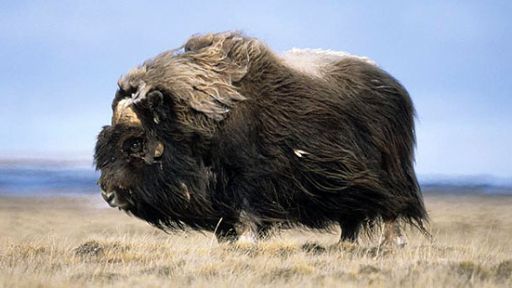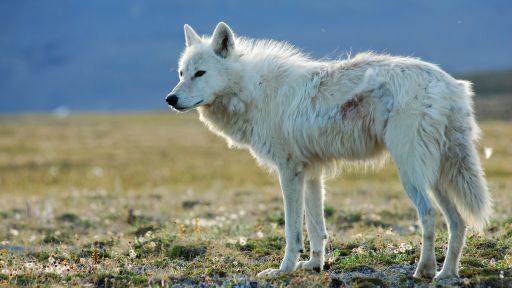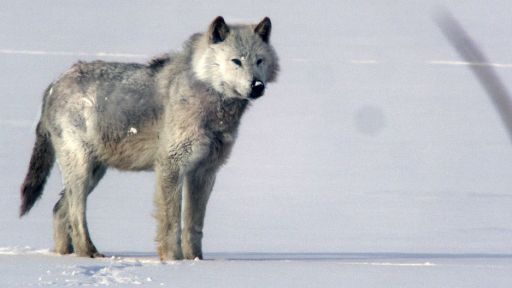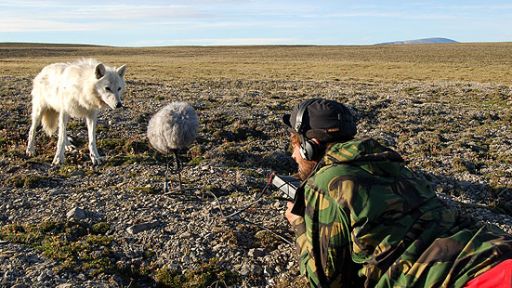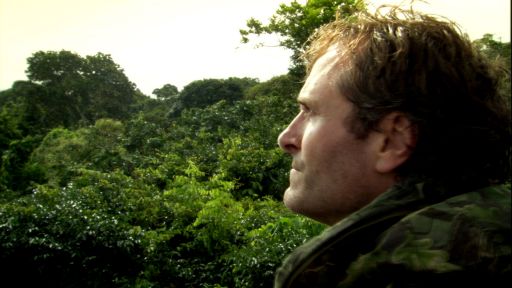The first obstacle was just a big stream but still tricky to cross with the ATV. The last thing we wanted was to lose the ability to get about quicker than walking pace (wherever that’s possible).
There was a deep water channel and “H” got off the back of the machine to see which would be the best route. This was a technique we were going to perfect in a very short period of time.
“River One” was next (we’d started to name them rather creatively). This was fairly deep and wide and we found our best bet for a crossing was at the mouth of the river where the water had spread its volume over an even wider distance – and was therefore shallower.
We made it; but only just! And mostly thanks to the fact that the mud banks were still frozen.
Travelling along the shore towards the next river, we went past a beautiful little iceberg some 500m offshore and spotted what we thought was the most amazing sand and rust coloured rock.
On closer examination, it turned out to be a massive piece of polyurethane foam, 3m x 2m x 0.5m. All over it were signs of wolf claws and stains. H thought it was a spot where they mark their territory.
Dried milk and sawdust
Another amazing place we found was what appeared to be an old hunter encampment with many musk ox heads scattered about the beach as though there had been a dreadful slaughter of some kind.
I spotted something that looked like an iron object and asked H to investigate, as he was close by. It turned out to be the remains of a very old rifle; large bore, single shot, but quite small.
My mind raced, thinking of all the early explorers and how they would have settled their ship in the bay and put ashore a hunting party to supplement the ship’s rations. I took a picture of H with the rifle in one hand and a musk ox head in the other – like the hunters used to do.
We went as far as fuel allowed and returned somewhat tired from our adventures, particularly the nerve-wracking river crossings.
The following day, after our normal breakfast of dehydrated porridge (a bit like chewing your way through sawdust and dried milk powder with the odd dead fly thrown in for good measure) we phoned Fergus, our producer boss back in the BBC Natural History Unit’s Bristol HQ and explained how difficult we were finding getting about but that we were going to do our very best regardless.
He thanked us for our efforts and said he really wasn’t expecting us to be successful in finding a wolf den.
On the trail
Our mission today was to push the eastern boundary and so we stocked up as before, plus more fuel, and set off determined to get further.
After only 40 minutes and just past the iceberg we had seen the previous day, we came across our first wolf of the trip. We were euphoric; like two children having just reached the seaside after a long car journey.
Characteristically, the wolf – soon to be named Bertie – went a full semi-circle around us so that he (at least it looked like a he) could get a sniff of our tracks. He was a little bit scrawny and had what looked like a fly bitten tail, I got the impression he was of the older generation.
He passed through our camp, having investigated a ringed seal some 300m off shore. As soon as Bertie got close, it promptly disappeared down its breathing hole under the ice.
Den hunt
We wanted to follow Bertie for as long as we could, hoping that he would give us some inkling as to where his den was. As it happens, just close to where we were scuppered from going any further west, Bertie turned inland and up the side of a valley.
I pursued at a distance with H hanging on for grim death but, alas, again the bog got us; but not before noticing that the wolf was doubling back inland. I flippantly remarked to H that we should get back to camp, have a brew and catch him where we first saw him later on.
And – believe it or not – that is exactly what happened. H and I were both staggered at our impeccable timing and we were both beginning to believe that luck was on our side.
Again we followed Bertie eastward until we came across big “River Number Two”. This one we nearly managed to negotiate, but for the last deep channel of water. We agreed it might be pushing our luck a little too far, so we returned to camp happy at our day’s progress.
Later that evening it rained. Rain in the Arctic – apparently we are due 6cm – the entire average rainfall for a year!

